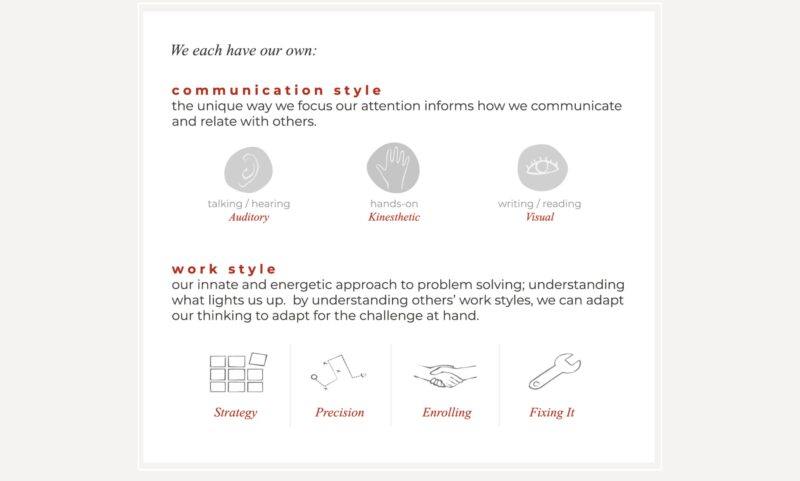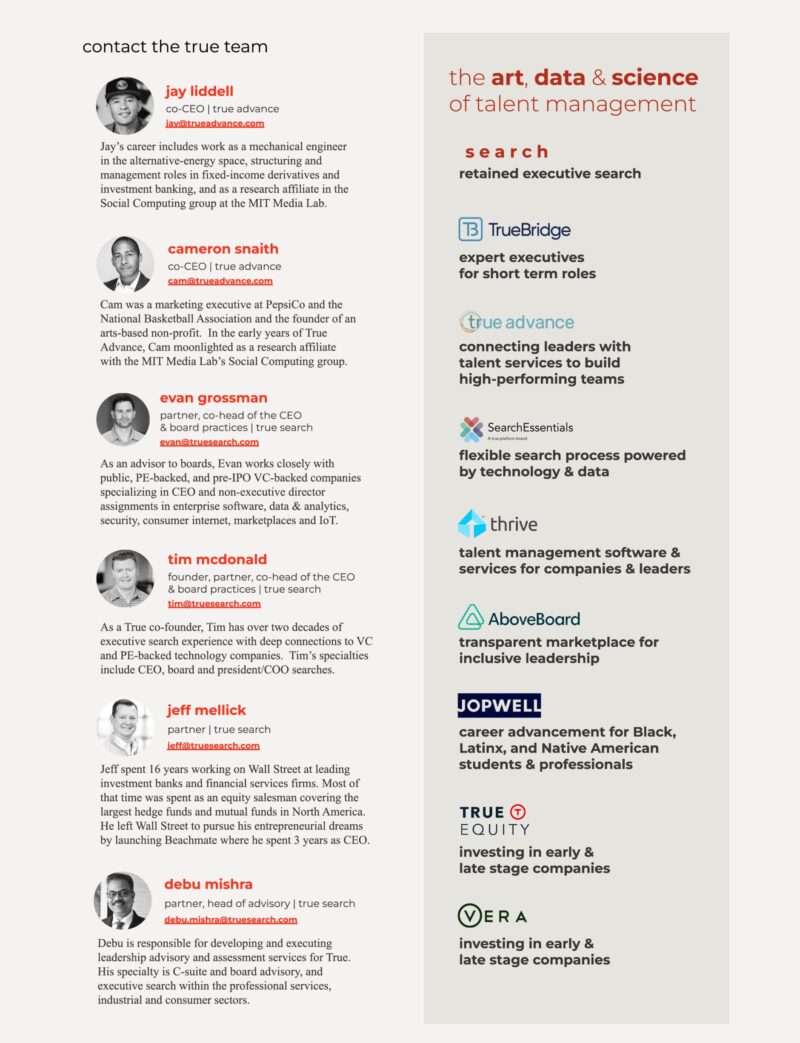On paper, the executive leadership team has all the right talent. They are smart, experienced, high EQ professionals. There are no functional gaps and the group is individually accomplished.
Despite these desirable attributes, their collective performance is still falling short of expectations. This common executive talent problem leaves many CEOs wondering, ‘How can I transform these high-performing individuals into a high-performing team?’
The Unexamined Leaders
The answer, says True Advance co-CEO Jay Liddell, will come from assessing your team’s preferred working and communication styles.

Those gaps, he explains, aren’t for any lack of skills. It’s a lack of knowledge about how the team can best work together.In 2012, Liddell and Cameron Snaith co-founded the assessment and coaching company Bleeker, now True Advance, a True platform brand. The company immediately grabbed CEOs’ attention because True Advance’s comparatively simple neuroscience-based test got straight to the heart of what leaders need to know to make great teams.

Fast forward to 2023, where Bitly’s CEO Toby Gabriner had successfully rebuilt his executive team with new leaders occupying almost every key role. To quickly establish a high-performance culture and collaborative leadership, he needed to learn how each member of his team worked and equip them with those insights to work more effectively.
Bitly enlisted True Advance to uncover their collaborative dynamics using a team assessment. True Advance delivered actionable insights on how Bitly’s leadership team worked best, including recommendations for enhanced leadership team performance and their greatest potential risk factors.

Aim for a Diversity of Styles
One risk factor assessments can reveal is a team with similar working styles. Diversity of thought keeps teams nimble and able to react to change. That versatility also protects companies.

The venture capital world revealed the dangers of a lack of diverse thinking styles when the economy faltered in 2022. Some startups filled with “big-idea, future-oriented thinking” simply continued working on big ideas and weren’t prepared to pivot to focus on execution. There weren’t enough leaders who prioritized tactical, analytical, and procedural thinking.
“A lot of startup leaders weren’t able to adjust and their companies suffered as a result. Not because their people weren’t intelligent or didn’t work hard,” Snaith says. “But it can be really difficult, especially without any awareness of how you work best, to shift when the shift is required.”

It’s also important to remember that achieving this diversity of thought isn’t a natural result of a typical interview process. Most people, and interviewers, find it easier to be around those they naturally agree with. But easy groupthink doesn’t create high-performing executive teams. Assessments make everyone involved in a hiring decision more aware of potential biases and able to curate a diversity of styles with intention.
When a CEO understands how the people on their team can work best—and where gaps exist—the team can be more productive, efficient, creative, and ultimately, more effective. With this awareness, they can adapt their leadership approach to maximize team engagement. The CEO can know what they can and can’t expect from their team during moments of crisis. And they can be more targeted with future hiring to fill any style gaps.
“Today businesses operate in a rapidly changing world that demands a wide range of abilities to respond,” says Debu Mishra, True’s Head of Advisory.


Knowledge of the Team is a Tool in the CEO’s Tool Kit
CEO Practice co-head Tim McDonald says no matter the situation, all CEOs could benefit from an immediate understanding of their team’s working and communication styles.

The True Search CEO Practice placed 160 CEOs into new roles last year. Many of those placements were founder transitions, where the new leader was taking over for the person who started the company and built the culture.
McDonald’s co-head Evan Grossman works often with Enterprise software CEOs and sees the same need:

CEO Practice partner Jeff Mellick also advocates for assessments as a necessary step in the due diligence process. He says they not only benefit the CEOs themselves but also the company stakeholders. Assessing the leadership team helps protect everyone’s investment and provides insights into the team’s immediate needs.

